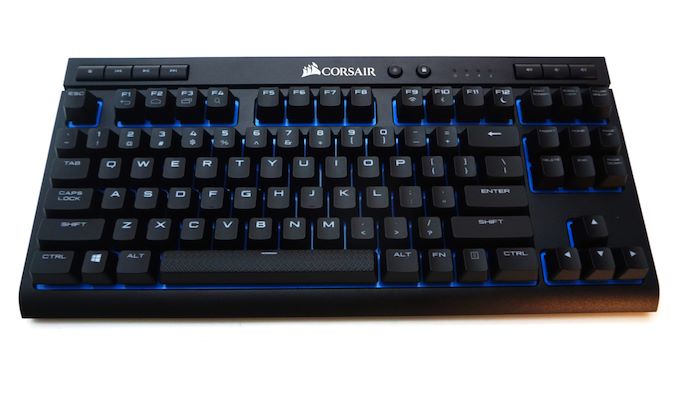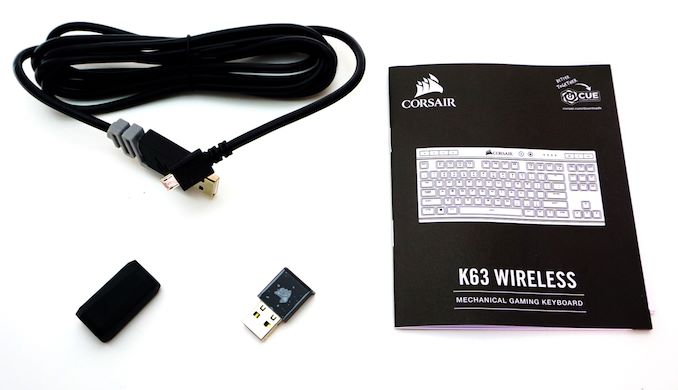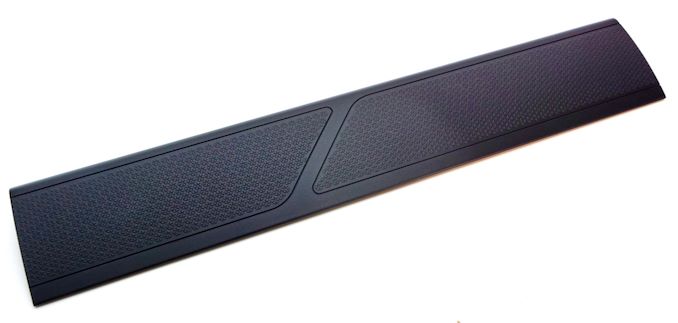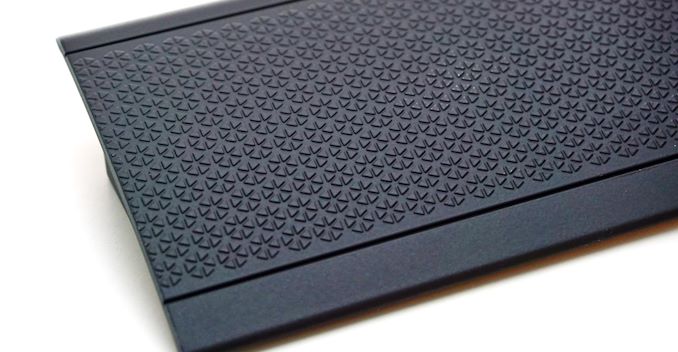The Corsair K63 Wireless Mechanical Keyboard Review: PC Gaming Untethered
by E. Fylladitakis on September 16, 2019 10:30 AM EST
Mechanical keyboards have come to practically dominate the current gaming peripherals market. With hundreds of manufacturers offering myriads of products, almost every user can easily find at least one product that suits their wants and needs. Despite that, there is still a sub-segment of this market that is greatly unexploited – wireless keyboards. There are many trade-offs that impact the feasibility of wireless mechanical keyboards, especially backlit ones. None of those concerns stopped Corsair from releasing the K63, a wireless version of the venerable tenkeyless K65.
Corsair is one of the largest players in today’s gaming peripherals market. The company has held several exclusive deals with Cherry, the most reputable manufacturer of mechanical key switches, allowing them to slightly outpace their competition. Today we are taking a look at their first wireless mechanical keyboard, the K63. Derived from the company's popular K65 keyboard, the K63 is intended to be a natural extension of the family, producing a mechanical keyboard that be used in environments where a wired keyboard isn't practical.
Overall, the K63 is not just a wireless keyboard, but is in fact a tri-mode keyboard: it can operate via Bluetooth, over 2.4GHz using an included USB wireless adapter, or it can be plugged in directly to a USB port. A wired fallback option is pretty typical for wireless peripherals, however supporting multiple wireless methods is a bit less orthodox. In the case of Corsair's wireless peripherals, the company has made a habit of supporting both Bluetooth and their own 2.4GHz link as a lower-latency option, and that is once again exactly what they have done for the K63.
Finally, along with the K63 keyboard itself, Corsair also supplied us with their Ironclaw wireless gaming mouse. As a keyboard on its own isn't terribly useful without a mouse, Corsair makes both, and they have provided both for us to be able to evaluate the practicability of a fully wireless gaming desktop.
Packaging and Bundle
We received the K63 in a sturdy cardboard box that is covered by a thinner, glossy exterior packaging. The packaging is dark with yellow accents and focused on a picture of the keyboard itself, which has been Corsair’s aesthetic trademark for years.
Inside the box we found the typical quick-start guide and warranty leaflets, a detachable micro USB cable, the 2.4GHz USB adapter, and one micro USB-B to USB-A adapter. There is no keycap puller or extra textured keycaps supplied with this model.
Despite the portability-focused design, Corsair does supply a full wrist rest alongside with the K63. It mimics the excellent wrist rest that we first saw on the K95 RGB Platinum, but it is smaller and the contact surface is not removable. It is soft to the touch and comfortable, yet the friction is great enough to keep a palm from slipping.















75 Comments
View All Comments
Marlin1975 - Monday, September 16, 2019 - link
Still more MicroUSB devices/cables/etc... that C right now. Be dumb for Corsair to go after a smaller market and limit themselves.Type C will take over eventually, but not over night.
TheinsanegamerN - Monday, September 16, 2019 - link
USB C came out 4 years ago. Most new android phones today use usb C outside of budget models.Dont make excuses for them. Type C is here, now. There is no reason to use microUSB over type C unless you are lagging 5 years behind the competition. This would be like releasig a parallel CD ROM drive in 2004, years after USB became universal.
They should have used type C in something this price.
Marlin1975 - Monday, September 16, 2019 - link
USB-C is still a mess and barely getting better. Don't take my word for it, there are plenty of reviews/reports that go into it.https://www.androidauthority.com/state-of-usb-c-87...
Its why so many new phone, laptops, etc... still use MicroUSB.
DanNeely - Monday, September 16, 2019 - link
The mess of mutually incompatible fast charging standards barfed on top of USB is a cluster on micro-b too; not something new for C. For a keyboard with a small battery and presumably a simple battery controller it's almost certainly a moot point with no fast charging modes being supported. Stacking thunderbolt, and multiple optional video output options on top of basic data is irrelevant for a keyboard.Meanwhile reversible plugs being easier to use, and the USB-C socket being stronger than the micro-B one are very relevant; especially since the rear location of the charging port means a lot of people will be trying to plug it in blind.
OTOH if this is a 2016 model not having C isn't that surprising since it was a fairly avant-garde feature at the time.
catavalon21 - Monday, September 16, 2019 - link
It's not that old. It was announced at CES in January 2018, and reviews all over the Net started in the months after that.Korguz - Monday, September 16, 2019 - link
" Don't take my word for it " based on your previous FUD comments, dont worry :-)Lord of the Bored - Tuesday, September 17, 2019 - link
Except back in 2004, compatibility and support for older hardware was a thing people concerned themselves with.If some barbarian needed an external CD drive, it was almost certainly for a laptop, and even odds if their machine even had USB ports. (The smart money would've been a CD-ROM with a PC Card interface, but I don't think anyone ever actually shipped those.)
piiman - Saturday, September 28, 2019 - link
Go buy an adapter thensnowmyr - Monday, September 16, 2019 - link
I would imagine when most people complain about not having usb type C they are probably just referring to the micro-usb end only.I have a ducky keyboard with micro usb and of course i could't care less that the cable attaches to the keyboard that way considering it's a wired keyboard and i don't plan on ever removing it.
For a wireless keyboard that cost a fair amount of money... well there is the hardware failure point for most of them one day.
dan82 - Monday, September 16, 2019 - link
I wish Type A would die as well, but I pointed out microUSB because for an accessory the device side is more important given that you can always swap out the cable. And also, microUSB feels more legacy than Type A, given how Android embraced it years ago on their phones.Type A is going to stick around for a long time unfortunately. No company sells a real Type C hub (as opposed to a connect-your-legacy-devices-hub). Heck, even Tesla still puts it in its cars. I’m pretty pessimistic there.